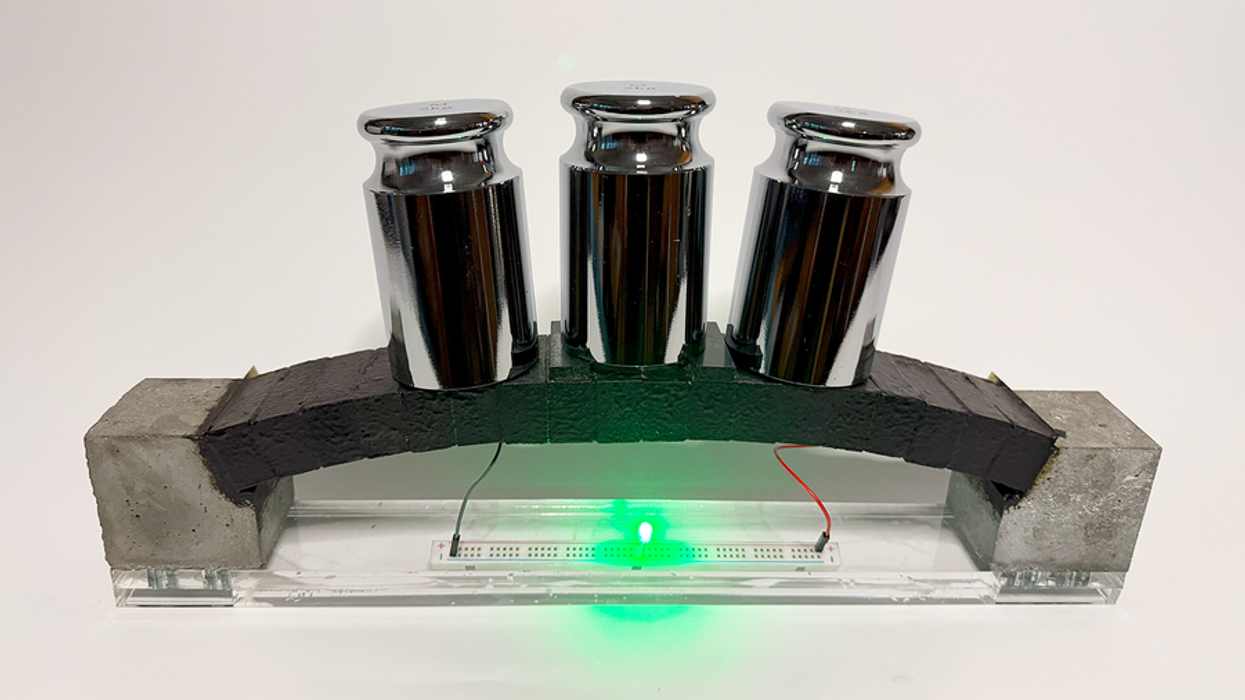If 2011 was the year of the protester, 2012 was the year of the crowd. From the passage of the JOBS act to the first million-dollar projects on Kickstarter, the creative force behind this year's most novel innovations wasn’t venture capitalists or big-time entrepreneurs—it was you. This was the year the burgeoning maker movement met the maturing social web to empower a new generation of designers, engineers and makers to bring innovative new products to market in an entirely new way.
But for all of its excitement and promise, this year was not without its setbacks. As the lawsuits and missed delivery deadlines remind us, democracy has its limitations. Here is a look back at 10 of the year’s most prescient moments and intriguing inventions.
1. The Elevation Dock, the First to a Million
If there is one company that stands as the antitheses of the open and messy innovation of the maker movement, it is Apple. So perhaps it was fitting that the first million-dollar Kickstarter project was a sleek aluminum charging station for the iPhone 4. The Elevation Dock, created by Casey Hopkins from Portland, Oregon, became the first project to cross the million-dollar mark on February 9, before closing two days later at almost half a million dollars more.
2. The Pebble Smart Watch, the Breakout Consumer Electronic of the Year
This year was also a big year for smart watches. From the unexpected popularity of iPod nano straps to new entries from Sony, Nike and Texas Instruments. App toting, bluetooth enabled digital watches were all the rage. But one product stands out from the pack, selling more watches in less time than any of its better-funded, better-marketed competitors. The Pebble Smart Watch, designed by Palo Alto-based Pebble Technologies, raised north of $10 million on Kickstarter, setting a new record for the site which still stands today. Despite the extraordinary fanfare and funding, the product launch has been plagued by supply-chain and engineering challenges, pushing the estimated delivery date from September until into the new year.
3. The FormLabs Printer, Challenging the Big Players
While the Pebble watch was the biggest Kickstarter campaign of the year, the FormLabs Form 1 3D printer may be the most interesting. Spun out of the MIT Media Lab, the Form 1 is the first desktop 3D printer to use high resolution SLA technology in a competitively priced machine, making it the polished Porsche to MakerBot’s clunky jalopy. After selling close to $3 million of pre-orders on Kickstarter, printing giant 3D systems filed lawsuits against the fundraising site and the Boston start-up for alleged copyright infringement, sending a chill through the 3D printing community.
4. The Replicator 2, Open Hardware Goes Closed
Even as FormLabs entered into the spotlight, MakerBot Industries, the original evangelists of desktop 3D printing, made plenty of news this year when they released their newest model, the Replicator 2, in September. Notable for its steel framed chassis and support for PLA (a plant based polymer), the launch made as many headlines for its new features as its decision to “go closed.” Born out of the open-source hardware movement, the company and its charismatic CEO have long championed the free dissemination of its design plans and electronic blueprints. So it came as a terrible shock to many in the community that the plans to their newest machine would not be published.
5. Shapeways, Factory of the Future
While 2012 was a banner year for desktop 3D printing, the higher end of digital fabrication got a much needed boost as well. Shapeways, the biggest 3D printing and prototyping service on the web, cut the ribbon on its brand new, digital “factory of the future” in Long Island City. Founded in the Netherlands, the company has relocated to New York and captured the imagination of politicians and law makers bent on revitalizing American manufacturing.
6. Easy 3D, Staples Gets into the Game
Shapeways wasn’t the only company to make a big bet on 3D printing as a service this year. Late last month, the office supply giant Staples announced a partnership with Irish device-maker Mcor, to offer an in-store prototyping service at select European locations.
7. Lasersaur, Laser Cutting for the Masses
While much of the digital fabrication buzz has been focused on 3D printing, laser cutters remain an important part of any maker space or machine shop. This year Nordt Labs has plans to release documentation for their open-source laser cutter, Lasersaur—adding another item to the list of dangerous toys on every maker's holiday wish list.
8. Makers, Chris Anderson’s Industrial Revolution
If there is a single sign that a techno-cultural movement has come of age it is being the subject of a Chris Anderson book. This year the prophetic writer and editor took aim at the maker movement in his latest title, Makers: The New Industrial Revolution. In it, he describes the convergence of open-source electronics, crowd-funding and desktop digital manufacturing as a force which will reimagine our economy and world. If his words weren’t convincing enough, this year Anderson joined the fray himself, stepping down from his longtime position as the editor of Wired to run his start-up focusing on 3D robotics, full-time.
9. Twine, Bridging the Physical and Digital Worlds
While the mantra of the year may have been atoms over bits, at least one startup project made strides toward bridging the gap between the two. Twine, another spin-out of the MIT Media Lab, raised over half a million dollars on Kickstarter for their wireless receiver to connect physical objects with the internet. Using a package of sensors, Twine lets users easily program an “internet of things” to receive messages and notifications when a command is triggered—allowing you to get a “tweet when your laundry’s done” or “a text message when you leave the garage door open.”
10. The JOBS Act, Washington Gets Into the Game
Despite a year of bitter partisan politics and aggressive campaigning, even policy makers in Washington were able to get together and stand behind a startup bill. Signed into law by President Barack Obama in April, the JOBS Act passed through the house and senate with bipartisan support. While the bill featured a number of provisions to support startups, the most notable was a provision legalizing equity-based crowd funding, removing in effect the barriers to entry for seed-stage investing. While the passage was considered a win by many in the industry, the crowd-funding bill has many professional investors and consumer advocacy groups concerned. The triumph of the crowd, for better or for worse.
Illustration by Corinna Loo.
















 Otis knew before they did.
Otis knew before they did.